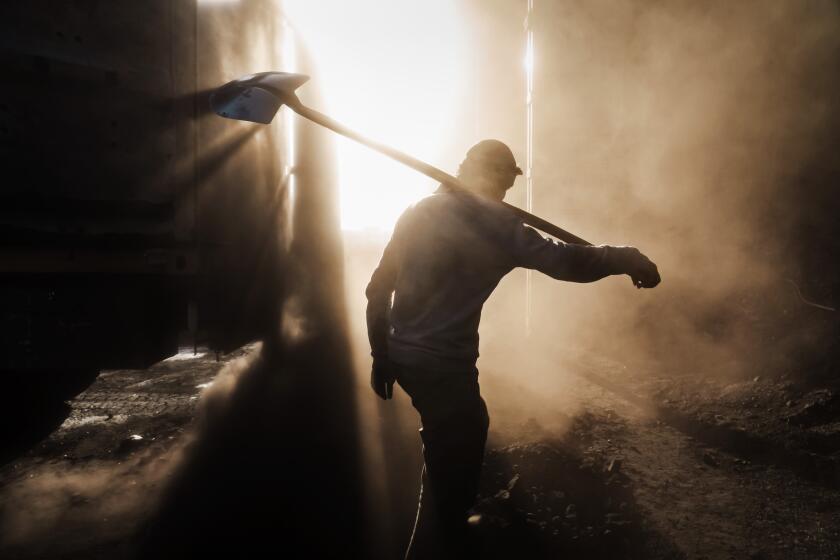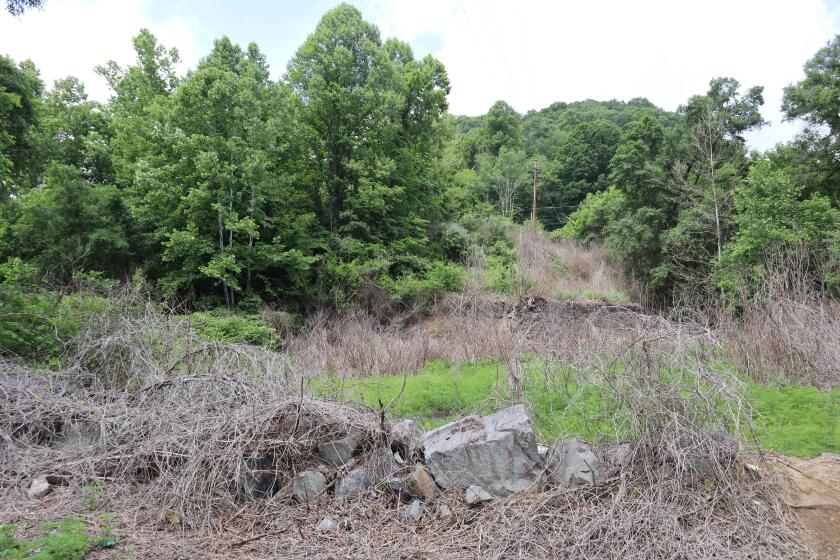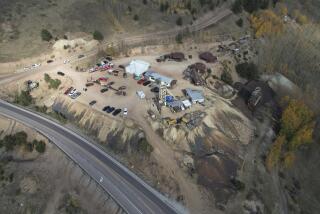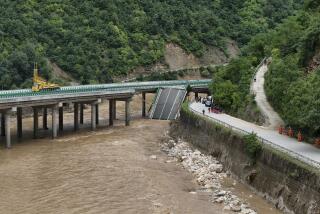5 killed, dozens missing in coal mine collapse in northern China
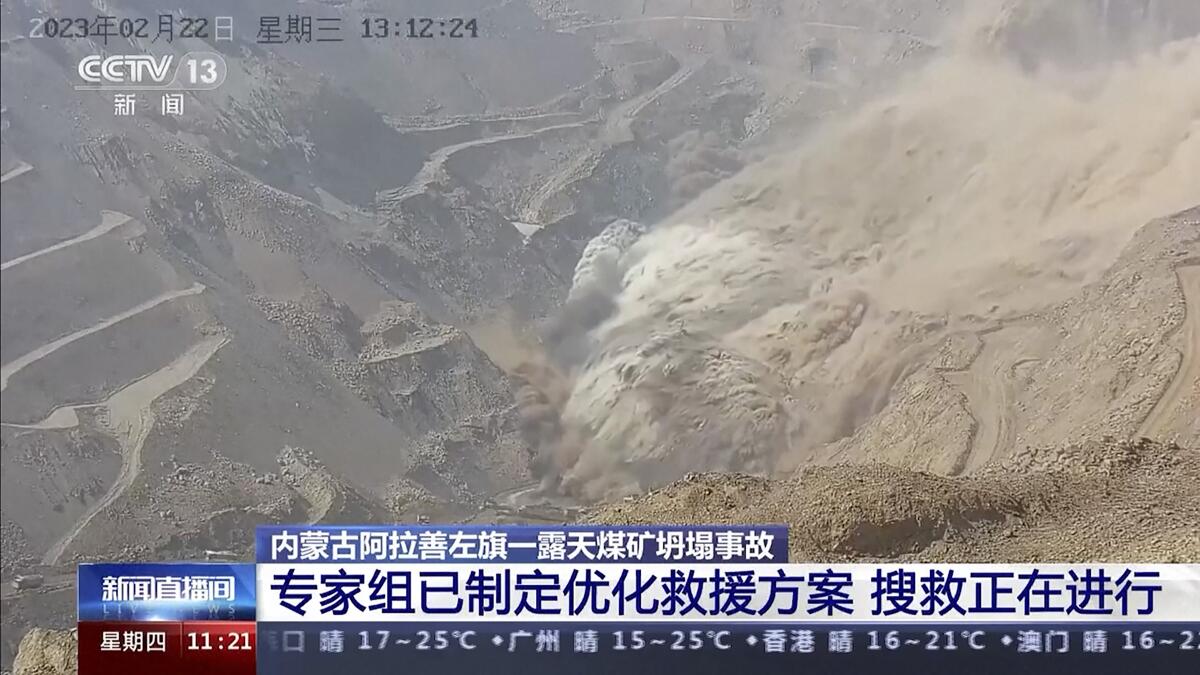
ALXA LEAGUE, China — Rescuers with backhoes and bulldozers dug through tons of earth and rubble for 48 people missing after a landslide buried an open-pit mine in northern China on Thursday. Chinese broadcaster CCTV reported that the death toll in the disaster rose to five.
Conditions in the area remain dangerous, and the search had to be suspended for several hours after a second landslide at the gigantic facility in Inner Mongolia’s Alxa League.
On Thursday afternoon, more than a dozen bulldozers, trucks, SUVs and fire engines were seen passing through a remote police checkpoint about 16 miles southwest of the mine.
Nearly all personnel were stopped by police and checked for entry approvals before being allowed to proceed farther along the road leading to the mine.
A police officer said only those with government approval would be allowed access to the area. She said people living close to the mine had been sent to stay in a nearby town.
Security was also tight at another checkpoint in the neighboring region of Ningxia, about nine miles east of the mine, with dozens of officers inspecting every vehicle that sought to pass in either direction.
Siddharth Kara’s ‘Cobalt Red’ is a powerful exposé of cobalt mining, which powers green technologies even as it destroys Congo’s poorest people.
Cranes and other pieces of heavy equipment could be seen, along with covered trucks. It was unclear what the trucks were carrying.
Rescuers used heavy digging equipment and cameras that could snake down into the debris, along with thermal imagers and equipment to detect vital signs, Chang Zhigang, the head of the rescue operation, told reporters Thursday.
Crews were using extreme caution to avoid more secondary disasters, Chang said.
“We will continue to increase the rescue force, race against time and do our best to search and rescue the lives of every trapped person,” he said.
One of the world’s poorest nations sits on abundant deposits of iron, lead, lithium and other minerals, possibly worth trillions of dollars.
Police are investigating the cause of the collapse, and some people have been detained, Chang said.
“We will publicize the result of the investigation in due course,” he said.
The initial cave-in of one of the pit’s walls occurred about 1 p.m. Wednesday, burying people and mining trucks in tons of rocks and sand. It was followed about five hours later by the additional landslide, forcing the work suspension.
The official Xinhua News Agency said about 900 rescuers with heavy equipment were on the scene and had resumed the search by Thursday morning.
News Alerts
Get breaking news, investigations, analysis and more signature journalism from the Los Angeles Times in your inbox.
You may occasionally receive promotional content from the Los Angeles Times.
Chinese President Xi Jinping called for “all-out efforts in search and rescue” and for “ensuring the safety of people’s lives and property and maintaining overall social stability.”
Images of the collapse distributed by CCTV showed a massive wall of debris rushing down a slope onto people and vehicles below.
The company running the mine, Inner Mongolia Xinjing Coal Industry, was fined last year for multiple safety violations, including insecure routes into and out of the pit, unsafe storage of volatile materials and lack of training for its safety staff, according to the Paper news website.
Inner Mongolia is a key region for the mining of coal and various minerals and rare earths, which critics say has ravaged the region’s landscape of mountains, grassy steppes and deserts.
The unmarked graves in a forgotten West Virginia burial ground known locally as Little Egypt contain the remains of dozens of coal mine workers who died in a 1912 mine explosion.
China overwhelmingly relies on coal for power generation but has tried to reduce the number of deadly mine accidents through a greater emphasis on safety and the closure of smaller operations that lacked necessary equipment.
China has recorded a slew of deadly industrial and construction accidents in recent months as a result of poor safety training and regulation, official corruption and a tendency to cut corners by companies seeking to make profits.
Despite those high-profile incidents, the overall number of industrial accidents fell by by 27% in 2022, when much of China’s economy was shut down under the government’s “zero-COVID” policy, from the previous year, the Ministry of Emergency Management said last month. The number of deaths in such accidents fell 23.6%, the ministry said.
More to Read
Sign up for Essential California
The most important California stories and recommendations in your inbox every morning.
You may occasionally receive promotional content from the Los Angeles Times.
